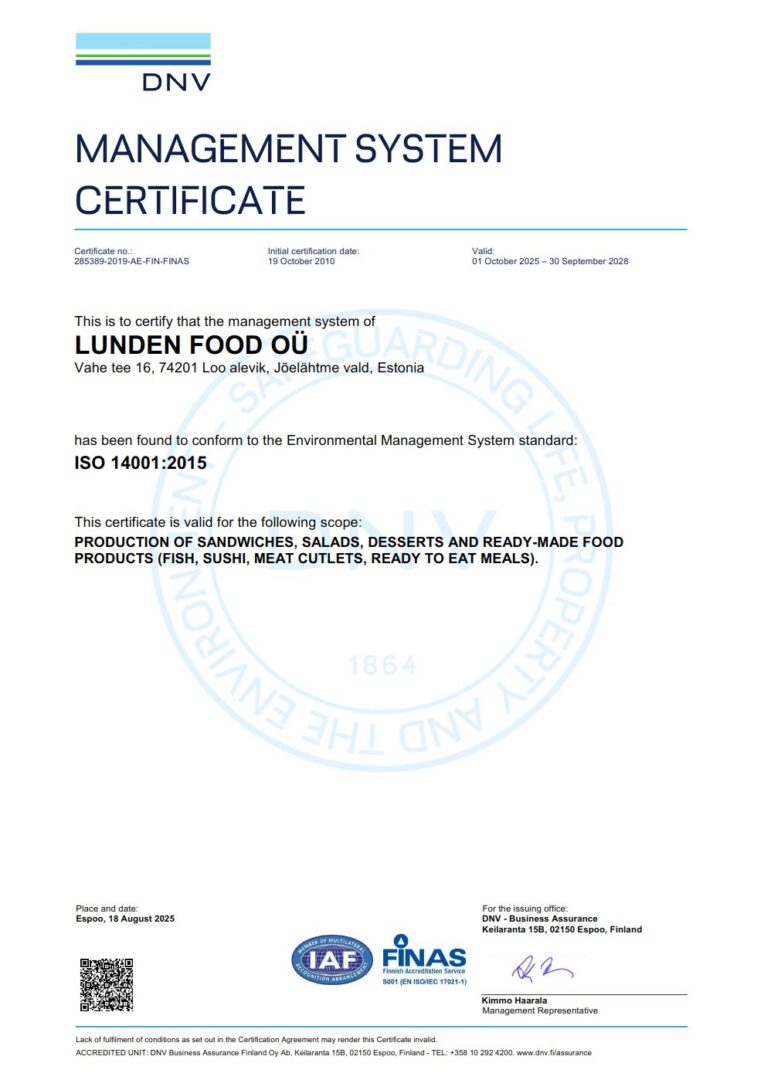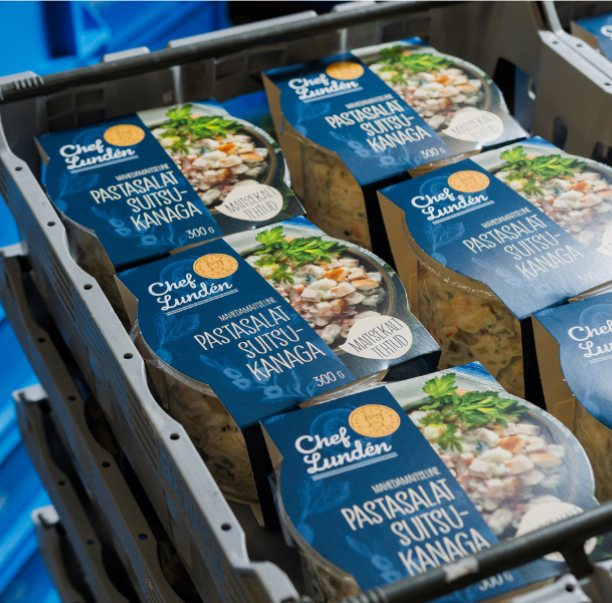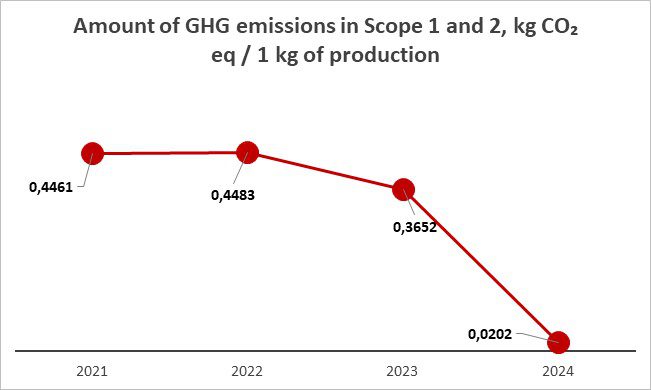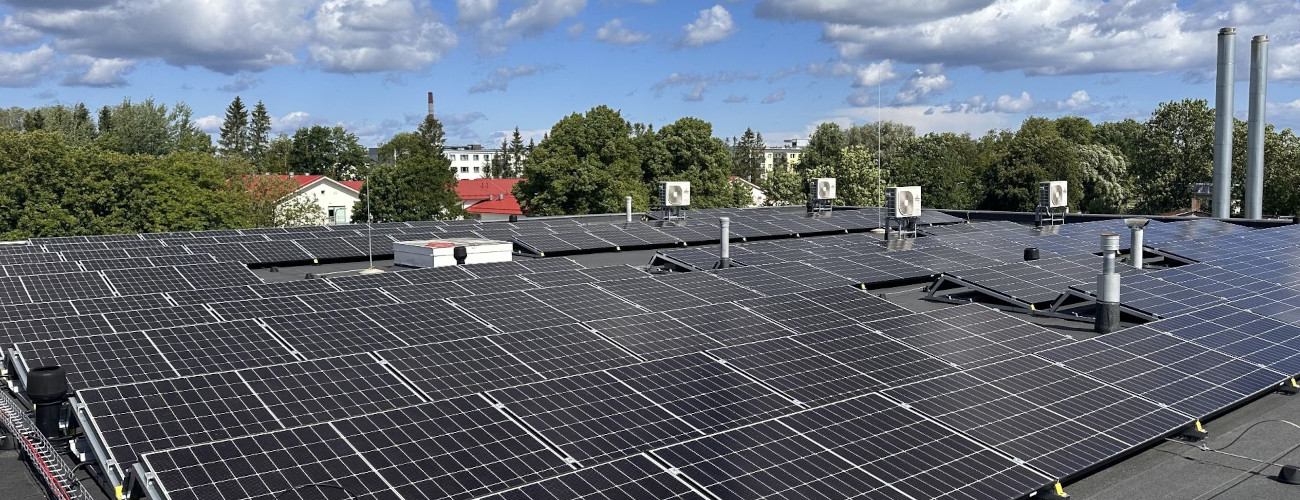Environment
We have an ISO 14001:2015 certified environmental management system in place since 2010. We own on-site wastewater bio-treatment plant since 2017 to treat the wastewater from production and thereby reduce the load on the local settlement’s wastewater line.
Since 2021, we have measured the scope 1 and scope 2 footprints of greenhouse gases. In 2023 we also set shorter and longer-term goals for reducing greenhouse gases.
In the next few years we are going to develop a scope 3 measurement model. To reduce scope 3 emissions, we buy more and a larger selection from one supplier if possible, which allows us to avoid excessive freight.
During the last year we have made several minor changes in production, such as switching to LED bulbs, installing lights with motion sensors in less frequented places in production and public rooms. Already during the extension we have directed the thermal energy from the cold rooms to heat the floor of the washroom of the employees' cloakroom.


Transport tare
We mainly use plastic boxes to transport products in order to reduce the use of disposable packaging and generation of excessive waste. At the same time these boxes also provide additional protection to the product packaging and thus it is possible to save on the packaging material of the product itself.
We use reusable plastic boxes and services from different companies.
The service provider of the boxes to be delivered to the Scandinavian market has drawn up a sustainability strategy for the coming years for the use of renewable energy in laundries, recycling of boxes that have gone out of circulation and changing the transport fuel of the boxes to a more environmentally friendly alternative fuel.
At the Estonian market we use the service provider which uses all broken boxes as starting material for new boxes. The washing lines for the boxes are modern, which ensure the good level of hygiene and the use of energy and water is optimally monitored. The main source of energy for washing machines is solar energy.
In 2021 we started calculating our scope 1 and 2 greenhouse gas footprints. We consider direct emissions, i.e. diffuse emissions resulting from the fuel and F-gases used in the company's vehicles under the scope 1. We consider purchased electricity and heat energy under the scope 2.
In 2024 we installed solar panels, which help to cover part of the purchased electricity. We have also started mapping and measuring the scope 3 area. In order to reduce the GHG emissions of the scope 3 area, we buy more and a larger selection from one supplier if possible, which allows us to avoid excessive freight.

Product Life Cycle Analysis (LCA) and Footprint Assessment
With the support of the EIS green grant, we developed an LCA calculation model for our products in 2025, based on various international standards. We assess finished products using cradle-to-gate stages, meaning from raw material sourcing and processing to the final product. We are initially focusing on the sandwich product group to evaluate the environmental impact of different raw material choices, production processes, and packaging solutions. The grant amount is approximately €9000, and the model was completed by September 30, 2025.

Starting from 2024, we use 100% renewable electricity, part of which is generated by solar panels installed on the roof of our production facility.
